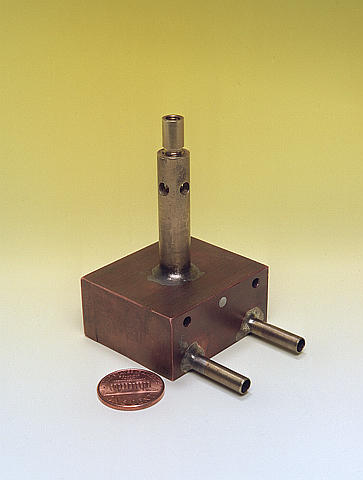My favorite cousin, Matt Nicodemus, has been involved in the pledge process for years and years to I told him I would post this here and CES’ Bulletin Board. All of you should take it.
:}
Latest development (6/13): At Fujen University, where one instructor has been handing out the Graduation Pledge in his ethics classes since 2006, Dean of Student Affairs Yang Bai-Chuan (??????) has just this week decided to offer all Fujen graduates the opportunity to take the voluntary oath at the school’s commencement this Saturday, June 14. See contact list at bottom for contact information for Dr. Yang and his secretary, Ms. Chi. This event will be the last chance this year to get photos, videos, and live interviews with graduates, faculty, administrators,and graduation guests.
GRADUATION PLEDGE PROGRAMS EXPAND, MATURE IN TAIWAN — NEW EFFORTS UNDERWAY IN INDIA
Graduation Pledge Alliance–Asia Regional Center (GPA-Asia)
P.O. Box 10123, Taipei, Taiwan 10099
Contacts: Matt Nicodemus, Executive Director (English language)
(e-mail) mattnico8@yahoo.com, (cell) +886-972-170-392
Sonia Zhan, Project Assistant (Chinese language)
(e-mail) soniazhan1126@gmail.com, (cell) 886-919-978-979
Steve Masters, Pledge Coordinator, GPA
(e-mail) smasters@bentley.edu, (tel) 1-413-478-7628 Prof. Neil Wollman, Ph.D, Senior Fellow, BentleyAlliance for Ethics and Social Responsibility, Bentley College, Waltham, MA
(e-mail) nwollman@bentley.edu, (tel) 1-260-568-0116
(website) www.graduationpledge.org
June 23, 2008, Taipei) Six years ago saw the introduction of the Graduation Pledge of Social & Environmental Responsibility to Asia, at the Singapore campus of INSEAD business school. Now, with pledges offered at five universities in Taiwan and two colleges in India, the graduation pledge programs are not only spreading through the region but are also growing in sophistication and impact.
Students taking the voluntary oath promise to explore the social and environmental consequences of jobs they consider, and to try and improve the social-environmental performance of organizations for which they work.
According to Matt Nicodemus, executive director of the Graduation Pledge Alliance-Asia Regional Center (GPA-Asia) in Taipei, 2008 marks several firsts for the Pledge in Taiwan. At Soochow University (SCU), where the career center has taken over coordination of the school’s pledge program, students recently participated in more than a week of activities designed to increase awareness of ethics and responsibility in career choices and on-the-job decisions. The GPA chapter at Chinese Culture University (CCU) last month joined the school’s administration to co-sponsor the first-ever Earth Week on campus. At National Taiwan University (NTU), the Student Graduation Association is creating new forms of pledge-taking ritual, and getting faculty involved. And at National Taipei University of Education (NTUE), future teachers are being encouraged to spend the week before commencement reflecting on how they could educate their own students to help make the world better.
“Taking the Pledge is so much more than just signing a piece of paper,” said Nicodemus, who helped start the first pledge program 21 years ago at Humboldt State University in Northern California, “and organizing a pledge program is so much more than just offering pledges to graduating students.”
Nicodemus noted that the most effective pledge efforts have three components: 1) educating the campus community about the Pledge and social-environmental responsibility issues that students will face in their work lives; 2) making the pledge available for graduates to take; and 3) following up with pledge-signers to provide the information and support they need to live out their pledge commitments. “Now, more and more, we’re seeing these different components in the pledge programs here in Asia.”
Charged by Soochow University’s office of student affairs with responsibility for managing the school’s pledge program, Career Center director Beauty Yu and her staff have put together a multi-faceted, highly engaging and informative series of activities to introduce students to the Pledge and issues of ethics and responsibility in employment-related choices. Beginning in mid-May, “Ethics at Work: Responsibility for your Work, Satisfying Cooperation with Colleagues, and New on the Job” ran for more than a week and included lectures, workshops, and trainings. “We hope students will be responsible to themselves and find the proper job which fits with their own values, then try their best to make the society better,” said Yu
While the Pledge has been available to Soochow grads since 2005, this year’s distribution will reach a far greater number of students, and offer them much more than a single pledge card. A pre-commencement public education program is being carried out on both the main Shihlin and downtown Taipei campuses, featuring beautifully designed informative banners, posters, and wall displays. At graduation ceremonies on June 7th, students will receive special decorative bags containing pledge cards, special “ribbon stickers” that can be worn on their gowns to show commitment to the Pledge, and information to help pledge-takers successfully live out their commitments to social-environmental responsibility. Faculty members and university administrators attending the events will also be able to wear ribbon stickers, to demonstrate their support for students considering and making the pledge promise. Angel Hsu, an instructor in the English department who coordinated Soochow’s pledge program last year, has brought the Pledge into her classrooms, having students write essays about how they could be socially and environmentally responsible in their jobs. “For me,” she explained, “it was one of the most meaningful assignments I’ve given, especially because I wrote an essay myself to show the students that all of us have to consider these important questions.” Business management senior Gina Chou volunteered for “Ethics at Work” and plans to sign the pledge at Soochow’s June 7th graduation. She emphasized, “For me, the Pledge is not only a promise to myself but to the whole world,” and noted that by signing and following through on the Pledge, she might be able to positively affect many people around her.Ilan County high school English teacher Huei-Wen Tsai, a graduate of CCU who signed the Pledge when it was first offered in 2004, admitted she didn’t really understand the commitment until she started to teach English in an Ilan high school. “I think it has been very lucky for me to be a public school teacher,” said Tsai, “because the call of a teacher, in essence, corresponds very well to the cause of GPA.” She fulfills her promise by often incorporating themes of environmental and social issues into her regular classroom instruction.The Graduation Pledge is spreading steadily in Taiwan, gaining new schools each year, and has also taken root in India, where several educational institutions have either begun offering the Pledge to their graduates or are considering doing so. Frequently, the programs of the pledge schools have been started by a single faculty member who decided to offer pledges to their own students. Success of the Pledge in their classroom then led to bigger and better things. At Fujen University (FJU) in Taipei, Father Daniel Bauer, a longtime instructor and regular newspaper columnist, has taught about the Pledge and distributed it to students in his ethics courses since 2006. Recently, he wrote that he’s “lending a hand in back of the scenes” with the goal of FJU beginning to include the Pledge in its official commencement ceremony.Meanwhile, GPA-Asia is working hard to compile and create practical resources that pledge-signers can use in making important choices of jobs and on-the-job choices, and also developing materials and processes for training students, teachers, and career counselors. Group leaders are also meeting with a variety of governmental agencies and private organizations with which it shares goals, seeking support and cooperation. “We’re quite excited about the interest that’s been shown in the Pledge and our work for social-environmental responsibility,” commented Matt Nicodemus, adding that contacts with Taiwan’s ministries of education and foreign affairs have been particularly promising.
Most active pledge schools in Asia:
Chinese Culture University (CCU, ??????), Taipei
Graduation and pledge activity date: June 7
Website: www2.pccu.edu.tw/pledge
Coordinator & faculty contact: Terry Wu (????), Director, Language Center, Instructor, English Department and Coordinator, GPA-CCU
terry0530@yahoo.com
(office) 02-2861-0511 x24401
(cell) 0928-528-464
Fujen University (FJU, ???????), Taipei
Graduation date: June 14
Pledge program coordinator: Dean of Student Affairs: Dr. Yang Bai-Chuan (??????)
005087@mail.fju.edu.tw
(office) 2905-2229
Secretary: Ms. Chi
046477@mail.fju.edu.tw
(office) 2905-2229
Faculty contact: Father Daniel J. Bauer (??? ??), SVD, Associate Professor, English Department and Chairman, English Department, School of Continuing Education
015130@mail.fju.edu.tw
(office) 02-2905-2565
National Taipei University of Education (NTUE, ????????), Taipei
Graduation & pledge activity date: June 7
Administration contact: Prof. Chen Chin-Fen (???), Dean of Academic Affairs
fen@tea.ntue.edu.tw
(office) 02-2732-1104 x2008, 2170
(cell) 0939-565-157
National Taiwan University (NTU,), Taipei
“Shout for Declaration” pledge activity date: June 6 (12:00 pm) Graduation date: June 7“Shout for Declaration” web page: www.bonvoyage.club.tw/10/shout_for_declaration.htm Student Graduation Association president: Cindy Hsu (???)
scjorme@hotmail.com
(cell) 0928-973-901
SGA pledge program organizers:
Sophia Kuo (???)
since19865@hotmail.com
(cell) 0955-293-575
Damien Chang (???)
damien0327@hotmail.com
(cell) 0921-823-321
Soochow University (SCU, ????), Taipei
Graduation & pledge activity date: June 7
Website: www.scu.edu.tw/career/
Career Center pledge program coordinators:
Beauty Yu (???), Director, Shihlin campus center
beauty@scu.edu.tw
(office) 02-2881-9471 x7571
Faculty contact: Angel Hsu (???), Instructor, Dept. of English
yesangel@hotmail.com
(cell) 0939-720-779





